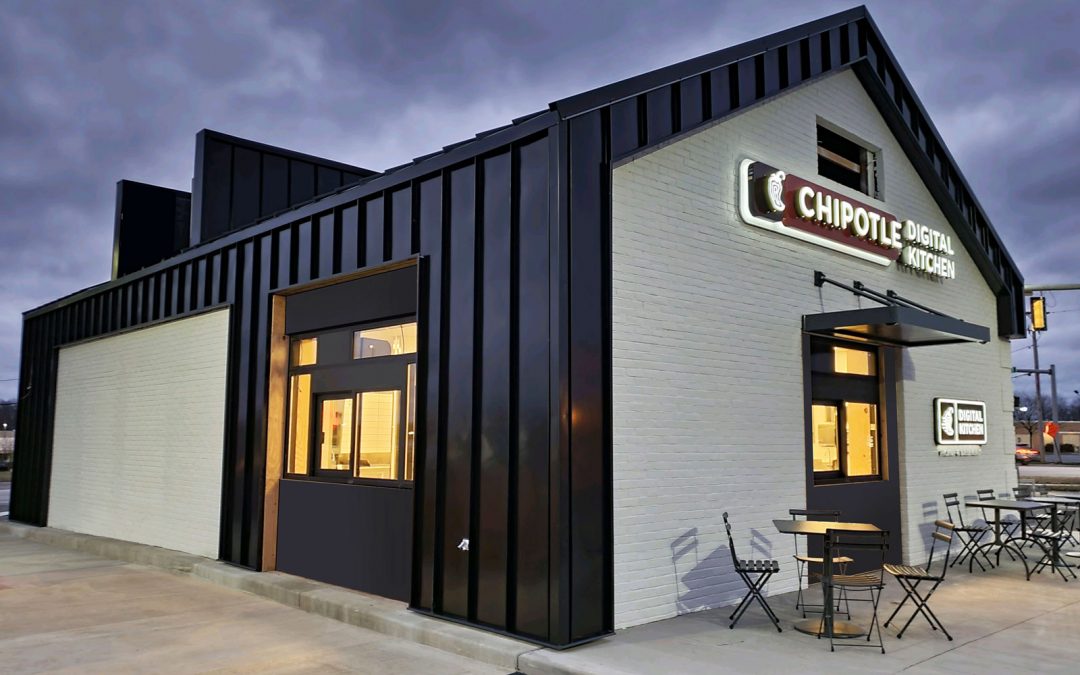Chipotle marked another exceptional year of business by nearly every metric. Off-premises operations and digital ordering were especially bright spots in its latest earnings report.
In the fourth quarter, Chipotle’s revenue increased 22 percent, reaching $2 billion for the first time in company history. Same-store sales (SSS) grew by 15.2 percent—not as high as the 31.2 percent in the second quarter but far higher than Q4 of 2020, when the company SSS were 5.7 percent. Overall margins were 8.1 percent.
For the full year, revenue increased 26.1 percent to $7.5 billion, SSS were up 19.3 percent. Margins for the full year reached 10.7 percent, up dramatically from 4.8 percent last year. Full-year, restaurant-level margins reached 22.6 percent, up 5.2 percent over last year.
The most notable highlight was digital sales. Sales through Chipotle’s digital platform grew by 3.8 percent in the fourth quarter, reaching 41.6 percent of sales. For the full year, digital sales were up 24.7 percent and reached 45.6 percent of sales.
The massive portion of digital proves out the efficiency of some big technology spending in the past few years, and will lead to deeper investments.
The company will add some AI technologies to help forecast demand and make prep more efficient, avoiding wasted food and the dreaded out-of-guacamole days. He noted real-world potential for automated dishwashing, as well, but said the company would stop short of automating cooking tasks. The real efficiency gains over the last year came from pushing customers to digital ordering.
“Incredibly, our full-year digital sales of $3.4 billion is nearly 3.5 times what we did pre-COVID in 2019. Digital has proven to be sticky as it’s a frictionless and convenient experience that has been aided by continuous investments,” said CEO Brian Niccol. “You will likely see us increasing technology enablement for our restaurants and support centers to amplify innovation, enhance the customer experience and optimize efficiencies to improve operational execution.”
He said the loyalty program the company launched in 2019 will continue to push that higher. The 26.5 million loyalty customers represent a “key enabler of our digital flywheel.” The next opportunity lies in converting the in-store burrito-line customers to digital.
“The 50, 60 percent that are dining room-only people, I think if we get those people to have a really positive experience using the rewards program, it’s just a tremendous unlock for what that rewards program can grow to be,” said Niccol. We have “learned quite a bit about how to do these journeys so that they communicate and engage the right way, so that we get the behavior more frequency, or if we see somebody lapsing, we get them to come back into the business.”
Off-premises continues to thrive
As for off premises, the company is most excited about the expansion of Chipotlanes. The company ended the year with 355 restaurants with the digitally-enabled pick-up option—81 percent of new locations include a Chipotlane.
“Overall, these formats continue to demonstrate a stellar performance,” said CFO Jack Hartung. “They have higher volume. They skew more towards digital, and that … comes from order-ahead, which is a higher margin transaction.”
The investment is about $75,000, but Hartung said the better operations mean “exceptional returns” at Chipotlane-equipped restaurants.
He said it also enables the company to go into smaller towns, which gives the company more white space for expansion.
On delivery, Niccol made it sound like the high cost of third-party originated delivery business was almost a non-issue given a 4 percent price bump and further bump on delivery platforms.
“We’ve got two kinds of businesses there, right? We’ve got our in-app delivery business or what we call white label and then, obviously, the third-party partnerships we have with like Uber Eats and DoorDash in marketplace,” said Niccol. “We took some pricing so that the margin issue became less of an issue. The reality is that channel comes with additional cost. If you want that convenience, it comes with some additional costs.”
In the SEC document, the company laid out average sales per restaurant and average sales without the delivery premiums. Overall, restaurants pulled in an average of $2.641 million. Subtracting delivery premiums, that’s $2.562. That implies a 3.08 percent premium on delivery platforms on top of the overall price increase. Customers appear to be fine with that.
“What we’ve seen is people recognize that and are willing to accept that for those occasions. So, our digital business is roughly 42 percent of the business. Today, delivery is about probably little less than 20 percent,” said Niccol.
The earnings mark yet another incredible quarter for the brand and show how digital operations, off-premises savvy and loyalty create a powerful flywheel and unlocks deep efficiency gains.


